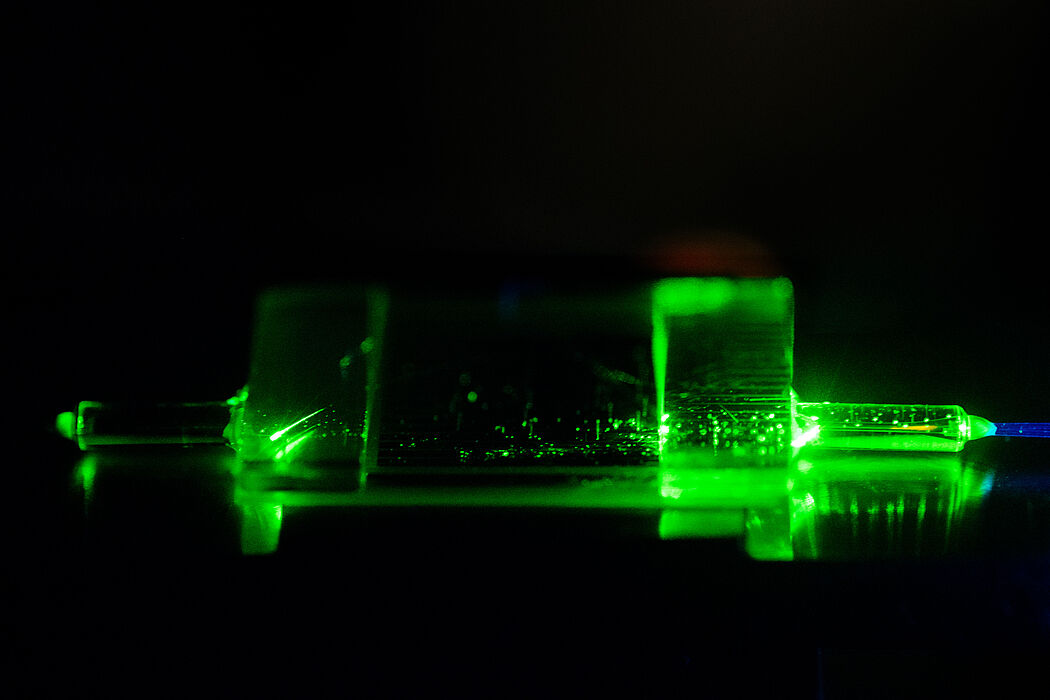Results published in Ultrafast Science
An international team of researchers from Germany, China, Israel and Vietnam has deciphered the attosecond collision dynamics of electrons with neighbouring atoms in solids, making them the first to identify the structure and dynamics of certain information encoded within the band structure. Their results were recently published in the technical journal, “Ultrafast Science,” a new partner journal of the well-known “Science” magazine.
The scientists worked with high harmonic generation (HHG) in their simulations. In the field of physics, this term is used to denote a very specific type of oscillation that is multiple times higher than the base frequency. The importance of HHGs to the study lies in their application in creating attosecond pulses which are said to be the “world’s fastest camera,” using spectroscopy to show the movement of electrons. An attosecond is one billionth of one billionth of a second, so an attosecond is to a second what a second is to the age of the universe. It is only recently that HHGs were observed in crystalline solids, unlocking great potential for compact attosecond light sources and determining the band structure of solid materials. The band structure describes the state of electrons and holes in a crystalline solid, providing information about the state of its electronic structure, while the hole refers to the positive charge carrier in semiconductors. It is the place where an electron used to be - before its energy increased to a higher level, allowing it to make its way through the solid.
“Many of the aspects underlying HHGs in solids are not properly understood yet,” explains Paderborn University’s Professor Torsten Meier. That’s what the team of physicists wanted to change. Meier describes what was involved in their simulations. “To put it in simple terms, it’s about strong electric fields on the atoms of a crystal creating mobile electrons and holes at the same time. These electrons and holes are then accelerated and migrate through the crystal. Light or radiation occurs when electrons and holes meet in space - that’s the collision - and destroy one another. This is what we call recombination. One important question is whether an electron-hole pair recombines with one another, or if recombination occurs with other electrons and holes. Equally, we are interested in where in space the recombination takes place, and how the movement of the electrons and holes within the crystal is changed by the atoms. We were able to show that the radiation emitted provides important information about the band structure, in other words, about the scope for bonding and movement within the crystal.”
By analysing the HHGs generated in solids, the scientists succeeded in deciphering the dynamics of collisions that are encoded in the band structure. So in principle, the HHGs were the means to an end. Professor Xiaohong Song of Shantou University in China has this to say on the matter: “Scientists have long dreamed of obtaining information about the internal structure and ultrafast dynamics. We're not normally able to observe this kind of information directly - high-resolution spectroscopy makes it possible. HHG has proved a useful tool. Electrons can be released by using intensive laser fields to stimulate a material, resulting in attosecond radiation. If the electron collides with its associated hole under certain conditions, high-energy photons, or high harmonics, are emitted. Photons are the smallest light particles which make up electromagnetic radiation.”
Professor Weifang Yang, also of Shantou University, explains, “These photons, which typically lie within the UV range of the electromagnetic spectrum, store structural and dynamical information about the electron - hole pairs. HHG spectroscopy presents a direct mapping relationship between the dynamic processes of electrons and holes.” Moreover, the scientists have shown for the first time that the collision between electrons - holes and neighbouring atoms depends on the impulse that they have received from the laser field. “When the electron - hole pair receives a strong impulse before the laser field reverses its direction, so that the wavelength of the pair is comparable to the size of an atom, this causes collisions with neighbouring atoms,” adds Ruixin Zuo, also of Shantou University.
The team’s work has proved that the collision information is encoded within the band structure. They have established a clear mapping between the electron - hole band structure and the harmonic spectrum. Not only do these results provide a unifying picture for experimental observations, but the improved understanding can also be used to specifically tailor radiation and, for example, create extremely short attosecond pulses.
Read the article in Ultrafast Science here: https://doi.org/10.34133/2021/9861923


